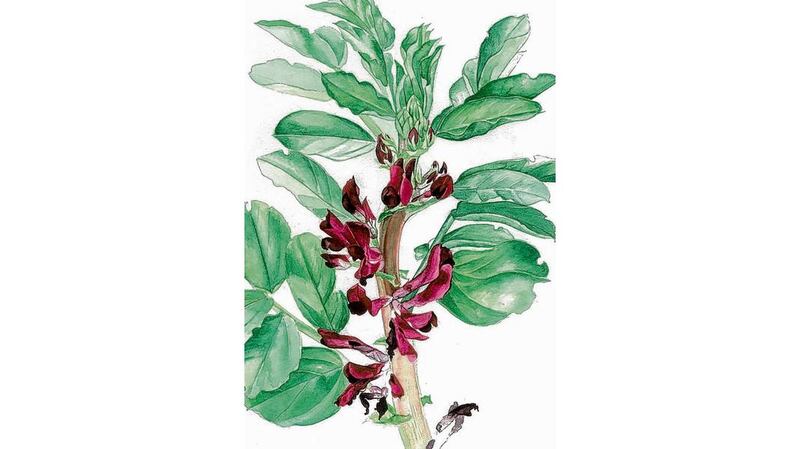Coming from a long and mongrel line of gardeners, there's great pleasure in knowing I'm following in the muddy footprints of others
I can’t remember exactly when I first became a gardener but I know that it was some time in my early childhood, soon after I sowed a handful of seeds from which some nasturtium flowers quickly grew – an eruption of leaves and fiery orange flowers that seemed to me both astonishing and miraculous.
Now, decades later, I feel much the same way. Gardening, I reckon, is the closest thing to magic, the grown-up equivalent of uttering a string of powerful incantations, of casting a spell and waving a magic wand.

How remarkable, for example, that something as tiny as an acorn can conjure up the mighty oak, or that a cutting taken from a parent plant has the power and the survival instinct to produce its very own root system.
How truly extraordinary that the miniature seeds of the foxglove, each weighing as little as half a milligramme, succeed in retaining their viability for so many years, or that the function of those tiny green markings on the inner tepals of the snowdrop is to act as the botanical equivalent of an airport’s landing strip, successfully directing pollinating insects towards the sweet reward of its nectaries.
Each spring I watch, with a kind of reverence, as the first flowering bulbs push their snouts above the ground, witchhazels unfurl their ragged blossoms, hellebore flowers as elegant as any ballgown open their petals and leaf buds begin to break from bare branches. Face-to-face with the evidence of nature’s remarkable regenerative power, surrounded by so much new life, it’s hard not to feel a kind of joy.
There’s great pleasure, too, in the knowledge that, coming from a long and mongrel line of gardeners, I’m following in the muddy footprints of others. My maternal grandfather, for example, was a fanatical tomato-grower and cultivator of sweet peas, so intent on keeping his tidy town plot free of the bindweed that engulfed a neighbouring garden that he laboriously buried heavy sheets of corrugated iron six-feet deep in the ground in an unsuccessful attempt to stop the plant’s wayward root system in its tracks.
His great-grandmother (my great-great-great-grandmother) was, I recently discovered, equally devoted. Given a copy of a century-old family diary, I was intrigued and moved to read that “gardening was her greatest hobby. No matter how cold or warm the weather seemed, she always enjoyed being amongst her shrubs and flowers.”
The same diary told me that she was a collector of fuchsias, a devotee of rock gardening and an expert grafter and lover of roses including the fragrant yellow-flowering climbing noisette rose known as ‘Marechal Niel’, first introduced in 1864.
Afterwards I searched for it in the lists of various specialist rose nurseries, locating it amongst the pages of Peter Beales’s extensive catalogue – an act lent extra poignancy by the announcement, days later, of this great English nurseryman’s death. Some day soon I will grow this rose too, cementing the link that binds me to a woman I never knew.
Then there are the ties that bind me to all gardeners past and present, the plants (so many) that bear the fingerprints of great horticulturists and breeders. One such is the sweet-scented, crimson-flowered broad bean, seeds of which are sold by Brown Envelope Seeds. This heritage variety was saved from near extinction in 1978 when an elderly lady by the name of Miss Cutbush donated her last four seeds to the Heritage Seed Library in the UK. I like to think of Miss Cutbush (such a great name for a gardener) when I catch the glorious perfume of those scarlet flowers on a warm spring day.
Putting aside the gardeners of the past and the present, there are the gardeners of the future. Passing on a knowledge of gardening to my three young sons is something that brings me joy, even if it does result in the occasional trampled seedling.
Watching them learn about plants from their grandparents is another special pleasure. Together we sow, grow and harvest the family fruit and vegetable plot, three generations bound together by a shared love. And then there are those quiet moments, all alone in the garden, that I enjoy most. Those moments when the sun shines, the birds sing, the flowers glow, the weeds seem not so out-of-control, and I wonder to myself at the beauty of it all.
See classicroses.co.ukand brownenvelopeseeds.com
DATES FOR YOUR DIARY:
Saturday, March 3rd (11am-4.30pm), ISNA Plant Fair, (€5)
Bellefield House, Shinrone, Co. Offaly. See angela.jupe.ie
Saturday, March 3rd (10am-4pm), "How to Build Your Design" with Tim Austen MGLDA and Colm Doyle MGLDA, €50-€80, see glda.ie
Saturday March 9th (10am-4pm), RHSI Seminar "Collecting Plants for a Better Garden" with speakers Jimi Blake, Carl Wright and John Massey at the National Botanic Gardens, Glasnevin, (€50-€60), see rhsi.ieor tel 01-2353912












